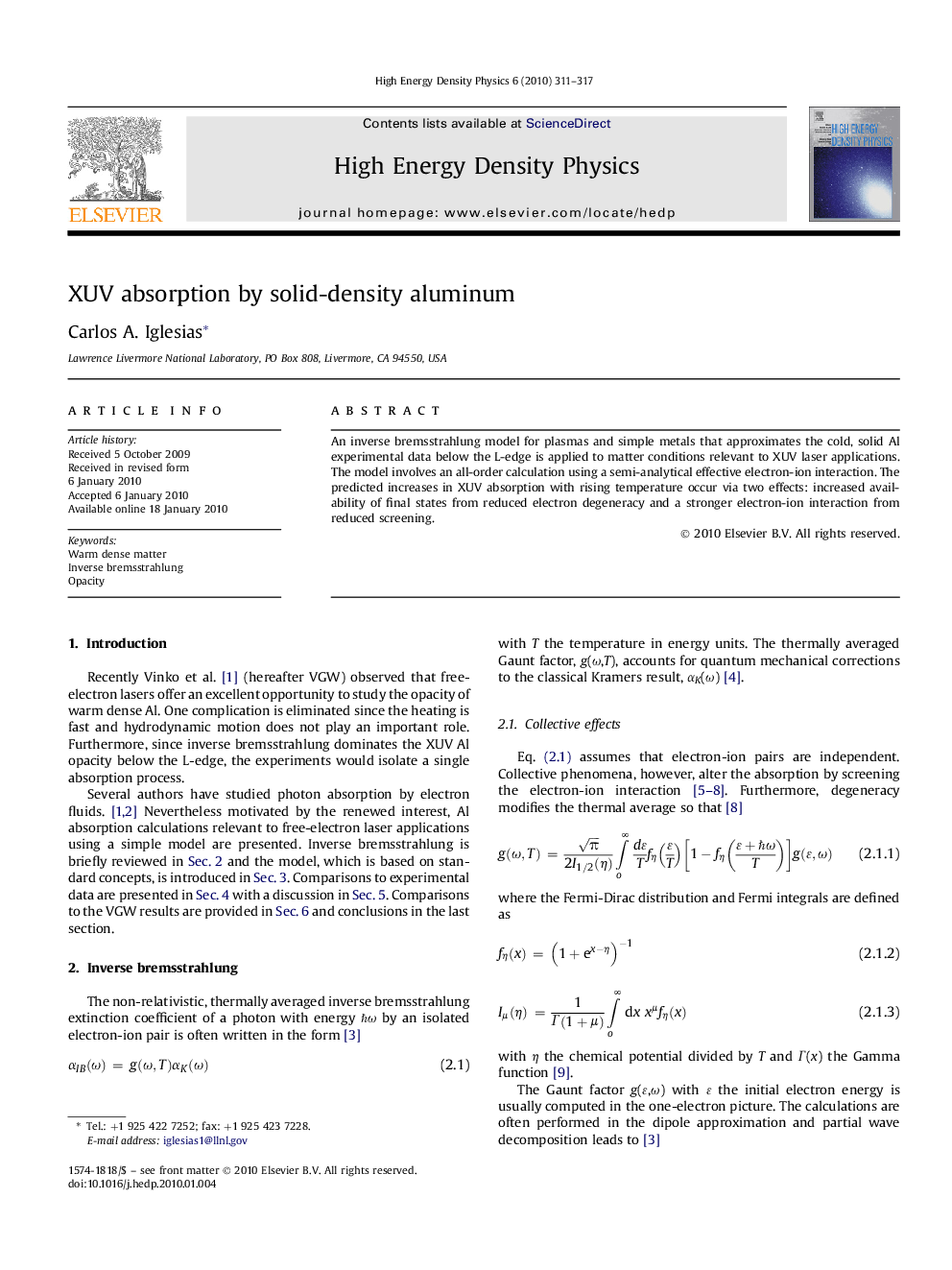| Article ID | Journal | Published Year | Pages | File Type |
|---|---|---|---|---|
| 1772547 | High Energy Density Physics | 2010 | 7 Pages |
Abstract
An inverse bremsstrahlung model for plasmas and simple metals that approximates the cold, solid Al experimental data below the L-edge is applied to matter conditions relevant to XUV laser applications. The model involves an all-order calculation using a semi-analytical effective electron-ion interaction. The predicted increases in XUV absorption with rising temperature occur via two effects: increased availability of final states from reduced electron degeneracy and a stronger electron-ion interaction from reduced screening.
Related Topics
Physical Sciences and Engineering
Physics and Astronomy
Astronomy and Astrophysics
Authors
Carlos A. Iglesias,
